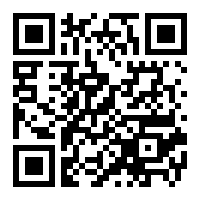Prototype of Temperature Control For Cold Chamber Using Fuzzy Based on Microcontroller
(1) Universitas Islam Negeri Sumatera Utara, Medan, Indonesia
(*) Corresponding Author
Abstract
Cold Chamber is a small cold room in a cooling system as a storage place for cold air before the air is flowed to the object to be cooled. A cooling system will be greatly influenced by temperature lowering sources. To be able to provide optimal results in a cooling system, it requires a cold chamber whose temperature can be controlled automatically. To be able to control the temperature, a tool is needed. So that the tool can control the temperature, the tool needs a sensor that can read the temperature in the cold chamber, namely DS18B20. This sensor works by reading the temperature of the environment and then sending it to the microcontroller. To control the temperature, the microcontroller will send commands to the fan which functions as a sender of cold air to the cold chamber, and a pump which functions to drain water on the hot side of the cooling element. The cold air source in this tool comes from Peltier TEC1-12706. The reading result and the desired temperature setting will be displayed on the LCD. If the actual temperature is greater than the desired temperature, the fan will blow more cold air into the cold chamber and the pump will flow water faster. If the actual temperature is less than the desired temperature, the fan will stop blowing and the pump will slow down the flow of water. With this tool, it will be easier to adjust the temperature in a cooling system.
Full Text:
PDFReferences
G. P. Anugrah, A. Ismardi, M. Sc, T. A. Ajiwiguna, and M. Eng, “Rancang Bangun Pendingin Untuk Perangkat Elektronik Pada Green House,” e-Proceeding Eng., vol. 4, no. 3, pp. 3928–3935, 2017.
L.T. Hebei, “Hebei I . T . ( Shanghai ) Co ., Ltd . Hebei I . T . ( Shanghai ) Co ., Ltd . Thermoelectric Cooler TEC1-12706.” pp. 2–4, 2013.
S. Sadi and T. Budiawan, “Kontrol Pendingin Ruangan (Fan) Dengan Logika Fuzzy Menggunakan Atmega 8535, LM35 Dan PIR,” TELKA - Telekomun. Elektron. Komputasi dan Kontrol, vol. 2, no. 2, pp. 94–105, 2016, doi: 10.15575/telka.v2i2.36.
E. A. Nugroho, “Sistem Pengendali Lampu Lalulintas Berbasis Logika Fuzzy,” J. SIMETRIS, vol. 8, no. 1, pp. 75–84, 2017.
F. C. Putra and V. V. R. Repi, “Perancangan Dan Pembuatan Kotak Pendingin Berbasis Termoelektrik Untuk Aplikasi Penyimpanan Vaksin Dan Obat-Obatan,” J. Ilm. Giga, vol. 18, no. 2, p. 73, 2019, doi: 10.47313/jig.v18i2.577.
Y. S. Parihar, “Internet of Things and Nodemcu: A review of use of Nodemcu ESP8266 in IoT products,” J. Emerg. Technol. Innov. Res., vol. 6, no. 6, pp. 1085–1086, 2019, [Online]. Available: https://www.researchgate.net/publication/337656615_Internet_of_Things_and_Nodemcu_A_review_of_use_of_Nodemcu_ESP8266_in_IoT_products.
Z. Zsevril, “Pendeteksi Suhu pada Perangkat Server Komputer Menggunakan Sensor DS18B20 dengan Spider Web View Berbasis Android,” 2018.
M. M. Maung, M. M. Latt, and C. M. Nwe, “DC Motor Angular Position Control using PID Controller with Friction Compensation,” Int. J. Sci. Res. Publ., vol. 8, no. 11, 2018, doi: 10.29322/ijsrp.8.11.2018.p8321.
DOI: https://doi.org/10.30645/ijistech.v3i2.63
Refbacks
- There are currently no refbacks.
Jumlah Kunjungan:
Published Papers Indexed/Abstracted By:












